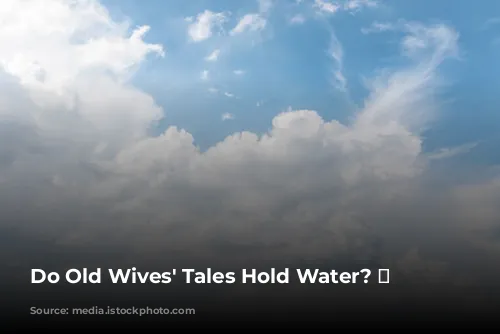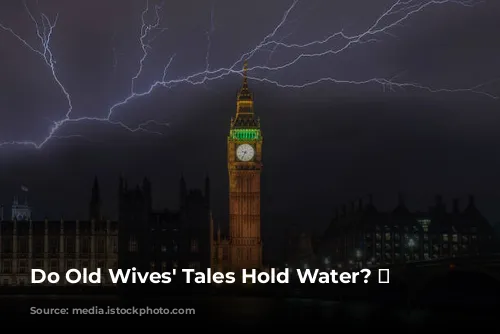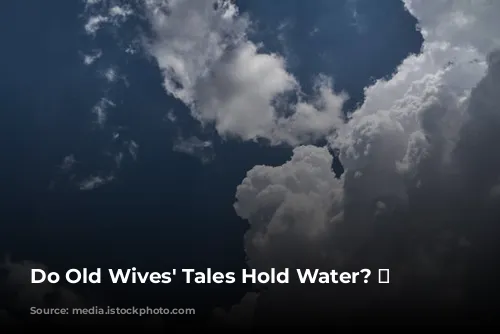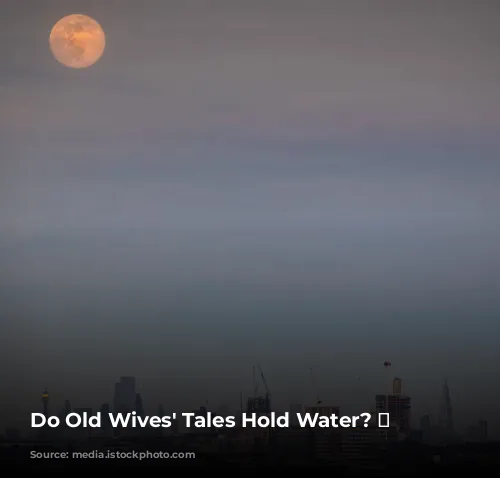Have you ever heard someone say, “Red sky at night, shepherd’s delight?” Or perhaps, “Cows lie down when it’s about to rain?” These are just a few of the many weather proverbs that have been passed down through generations. But do these old sayings actually have any scientific basis? Let’s delve into the world of folklore and see if there’s any truth behind these popular beliefs.

The Origins of Weather Proverbs
Weather forecasting has been around for centuries, but before the advent of modern technology, people relied heavily on observation and experience. Weather proverbs developed as a way to predict the weather based on patterns and signs. These sayings were especially important for farmers, sailors, and others whose livelihoods depended on understanding the elements.
Take the proverb, “Red sky at night, shepherd’s delight. Red sky in the morning, shepherd’s warning.” This saying, first mentioned in the Bible, describes the changing color of the sky at sunrise and sunset. The red hue is caused by dust and particles scattering blue light, leaving only red light to reach our eyes.
This proverb is most accurate when weather systems move from west to east, as they often do in the United Kingdom. A red sky at night signals that high-pressure weather is approaching, bringing fair skies and pleasant weather. Conversely, a red sky in the morning indicates that the high pressure has already passed, likely giving way to a low-pressure system with rain and wind.
Folklore vs. Fact: Debunking Weather Myths
While some weather proverbs have a basis in scientific observation, others are purely folklore.
One such myth is the saying, “St. Swithun’s day, if thou dost rain, for forty days it will remain; St. Swithun’s day, if thou be fair, for forty days ’twill rain no more.” This story originated with St. Swithun, a bishop in the Anglo-Saxon era. Legend has it that his body was moved from an outdoor burial site to an indoor shrine on July 15th.
The day of the move was rainy, and it continued to rain for the next 40 days and nights. This sparked the belief that the weather on July 15th would determine the weather for the following 40 days.
However, scientific evidence contradicts this claim. While the jet stream does play a role in predicting summer weather, there’s no proof of rain lasting for 40 days.

Exploring Scientific Explanations
Some weather proverbs are grounded in science. For example, the saying, “When halo rings Moon or Sun, rain’s approaching on the run,” accurately describes the formation of halos around celestial bodies. These rings of light are created by ice crystals in high clouds refracting light from the moon or sun. As these crystals descend, the chance of precipitation increases, especially in summer, when they can signal approaching storms.
Another proverb, “When the wind is out of the East, tis never good for man nor beast,” also has a scientific basis. Eastern winds in Britain often originate from a polar continental air mass, which can bring bitterly cold temperatures in winter and dry, warm winds in summer.

The Limits of Weather Lore
While some weather proverbs offer valuable insights, others lack scientific validity. For instance, the proverb, “Rain before seven, fine by eleven,” is not always reliable. Weather systems can move quickly, but sometimes rain can linger for longer than a morning.
The saying, “Cows lie down when it’s about to rain,” is another example of a myth that is not supported by evidence. Cows lie down for many reasons, such as relaxing or chewing their cud, and there’s no scientific link between cow behavior and impending rain.

Unveiling the Truth: Science vs. Folklore
Many weather proverbs have been passed down for generations, reflecting our fascination with the elements. While some of these sayings have some scientific validity, others are simply folklore. It’s important to separate fact from fiction when interpreting weather lore.
From red skies to haloes, from wind direction to cow behavior, these sayings have provided a framework for understanding the weather. While they may not always be accurate, they reflect our enduring connection with the natural world and our desire to make sense of its mysteries.









